
Harz National Park: Germany's Enchanted Wilderness
Explore Harz National Park: A mystical blend of nature, adventure, and folklore in Germany's heartland.
Nestled in the heart of Germany, Harz National Park is a magical destination for nature lovers and adventure seekers. This stunning park spans over 24,000 hectares and is home to dense forests, rugged cliffs, and serene lakes. The park's diverse landscape offers a variety of outdoor activities, from hiking and biking to bird watching and skiing in the winter months. One of the park's highlights is the Brocken, the highest peak in the Harz Mountains. At 1,141 meters, it offers breathtaking panoramic views of the surrounding area. The Brockenbahn, a historic steam train, provides a scenic and nostalgic way to reach the summit, adding a touch of old-world charm to your visit. The mountain is also shrouded in folklore, often associated with witches and legends, making it a fascinating spot for those interested in local myths. The park is also rich in biodiversity, with numerous species of plants, animals, and birds. Keep an eye out for the elusive Eurasian lynx, red deer, and the rare black stork. For a more immersive experience, there are several well-maintained trails that take you deep into the wilderness. Whether you're an avid hiker or a casual walker, there's a trail that will suit your pace and interest. The park also offers guided tours and educational programs for those who want to learn more about its unique ecosystem. Harz National Park is not just about nature; it also has a cultural side. The picturesque towns of Wernigerode and Goslar are nearby and offer charming medieval architecture, delightful cafes, and local crafts. These towns serve as perfect bases for exploring the park while providing a glimpse into the region's rich history and culture.
Local tips in Harz National Park
- Visit during different seasons to experience the park's changing beauty, from snow-covered landscapes in winter to vibrant foliage in autumn.
- Wear sturdy hiking boots and bring a map or GPS device; some trails can be challenging and remote.
- Take the Brockenbahn for a scenic and unique way to reach the summit of Brocken.
- Check the weather forecast before you go, as conditions can change quickly in the mountains.
- Explore nearby towns like Wernigerode and Goslar for a taste of local culture and history.
Harz National Park: Germany's Enchanted Wilderness
Nestled in the heart of Germany, Harz National Park is a magical destination for nature lovers and adventure seekers. This stunning park spans over 24,000 hectares and is home to dense forests, rugged cliffs, and serene lakes. The park's diverse landscape offers a variety of outdoor activities, from hiking and biking to bird watching and skiing in the winter months. One of the park's highlights is the Brocken, the highest peak in the Harz Mountains. At 1,141 meters, it offers breathtaking panoramic views of the surrounding area. The Brockenbahn, a historic steam train, provides a scenic and nostalgic way to reach the summit, adding a touch of old-world charm to your visit. The mountain is also shrouded in folklore, often associated with witches and legends, making it a fascinating spot for those interested in local myths. The park is also rich in biodiversity, with numerous species of plants, animals, and birds. Keep an eye out for the elusive Eurasian lynx, red deer, and the rare black stork. For a more immersive experience, there are several well-maintained trails that take you deep into the wilderness. Whether you're an avid hiker or a casual walker, there's a trail that will suit your pace and interest. The park also offers guided tours and educational programs for those who want to learn more about its unique ecosystem. Harz National Park is not just about nature; it also has a cultural side. The picturesque towns of Wernigerode and Goslar are nearby and offer charming medieval architecture, delightful cafes, and local crafts. These towns serve as perfect bases for exploring the park while providing a glimpse into the region's rich history and culture.
When is the best time to go to Harz National Park?
Iconic landmarks you can’t miss
Landschaftsschutzgebiet Harz und südliches Harzvorland
Explore the breathtaking landscapes of Landschaftsschutzgebiet Harz und südliches Harzvorland, a nature preserve offering adventure and tranquility for every traveler.

Titan RT
Experience the breathtaking height and stunning views of Titan RT, the iconic bridge in Harz, perfect for hiking and adventure seekers.

Baumannshöhle - Rübeländer caves
Explore the stunning Baumannshöhle - Rübeländer Caves, a breathtaking underground attraction in the Harz Mountains, rich with geological wonders and history.

Baumwipfelpfad Harz
Discover the breathtaking heights and rich ecology of the Harz Mountains at the Baumwipfelpfad Harz, a unique treetop experience for all ages.

Burg und Festung Regenstein
Discover the captivating history and breathtaking views of Burg und Festung Regenstein, a must-visit historical landmark in Blankenburg, Germany.

Hexentanzplatz Zoo
Explore the enchanting Hexentanzplatz Zoo in the Harz region, where wildlife meets folklore in a breathtaking natural setting, perfect for families and nature lovers.

Caves experience center Isenberg limestone cave
Explore the stunning Isenberg Limestone Cave in the Harz region—an unforgettable subterranean adventure awaits with breathtaking formations and scenic hikes.

Königshütte Waterfall
Experience the breathtaking beauty of Königshütte Waterfall, a serene retreat in Elbingerode, perfect for nature lovers and adventure seekers alike.

Unicorn Cave
Explore the mesmerizing Unicorn Cave, a historical landmark in Herzberg am Harz, showcasing stunning geological formations and surrounded by picturesque hiking trails.

Brockenhaus
Explore the stunning Brockenhaus, a visitor center in the Harz National Park, where adventure meets education amidst breathtaking landscapes.

Nationalpark-Besucherzentrum TorfHaus
Explore the stunning Harz Mountains at Nationalpark-Besucherzentrum TorfHaus, your gateway to adventure and nature's beauty.

Oderteich
Explore Oderteich, a serene hiking area in Harz National Park, where tranquil lakes and lush forests await your adventure in nature.

Scharzfels Castle
Discover the historic charm of Scharzfels Castle in the Harz mountains, a stunning ruin surrounded by scenic hiking trails and breathtaking views.

Büchenberg Pit
Explore the Büchenberg Pit in Elbingerode, a historic monument offering insight into Germany's mining heritage and delightful local snacks.

Samson Pit
Explore the historic Samson Pit in Sankt Andreasberg, a captivating museum showcasing the rich mining heritage of the Harz region.

Unmissable attractions to see
Wernigerode Castle
Explore the enchanting Wernigerode Castle, a stunning blend of history and natural beauty in the heart of the Harz region.

Baumwipfelpfad Harz
Discover the enchanting treetop walkway of Baumwipfelpfad Harz, a scenic attraction that connects you with nature and offers stunning views.
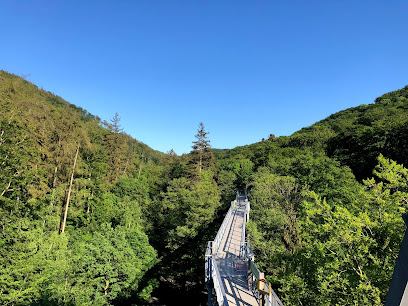
Imperial Palace of Goslar
Explore the Imperial Palace of Goslar, a UNESCO World Heritage site filled with history, stunning architecture, and serene gardens in the heart of Germany.

Wurmberg Gondola Lift
Discover breathtaking views and thrilling outdoor activities at the Wurmberg Gondola Lift, your gateway to adventure in the heart of the Harz Mountains.

Marktplatz
Discover the charming Marktplatz in Quedlinburg, where history, culture, and delightful local markets come together in a stunning medieval square.

Okertalsperre
Explore the natural beauty of Okertalsperre, a serene reservoir in the Harz Mountains, perfect for hiking, cycling, and peaceful retreats.

Brockenhaus
Explore Brockenhaus: A captivating visitor center on the Brocken plateau, bridging nature and culture in the heart of Harz National Park.

Baumschwebebahn Bad Harzburg
Explore the breathtaking beauty of the Harz National Park with a ride on the Baumschwebebahn Bad Harzburg, a thrilling aerial tramway experience.

Brocken Coaster Thomas mask
Feel the thrill of summer tobogganing at the Brocken Coaster in Wernigerode, where adventure meets breathtaking views in the heart of the Harz Mountains.

Oderteich
Immerse yourself in the tranquil landscapes of Oderteich, a highlight of Harz National Park, perfect for hiking and nature exploration.

Schlossmuseum Quedlinburg
Discover the charm of Quedlinburg at Schlossmuseum, a historical castle museum showcasing the region's rich heritage and stunning views.

Radau Wasserfall
Experience the natural splendor of Radau Wasserfall, a stunning waterfall and hiking paradise in Bad Harzburg, perfect for nature lovers and adventurers.

Samson Pit
Explore the fascinating history of mining in the Harz region at Samson Pit, a unique tourist attraction in Sankt Andreasberg.

Burgberg Harzburg
Experience the breathtaking views and natural beauty of Burgberg Harzburg, a must-visit tourist attraction in Bad Harzburg offering adventure and tranquility.

Märchenwald
Explore Märchenwald, a fairy tale amusement park in Bad Harzburg, where magic and adventure await families and visitors of all ages.
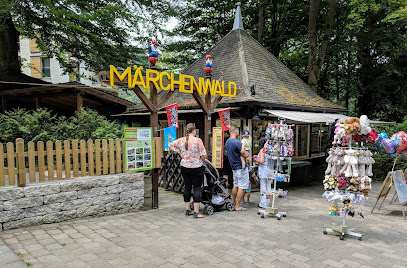
Essential places to dine
Bavaria Alm Torfhaus
Experience authentic German cuisine at Bavaria Alm Torfhaus while enjoying breathtaking views of the Harz Mountains.

Hexenritt Schirmbar
Discover Bavarian delights at Hexenritt Schirmbar in Braunlage - where culinary tradition meets breathtaking alpine scenery.

Harzer Spezialitäten & Brotzeitstube puppe‘s
Discover authentic Harz cuisine at Puppe's Deli & Bistro in Braunlage – where tradition meets taste in every bite.

Harz Hotel Altes Forsthaus Braunlage
Discover comfort and traditional German hospitality at Harz Hotel Altes Forsthaus in scenic Braunlage—your gateway to exploring the beautiful Harz region.

Nagelschmiede by Christian Meierding-Schmidt
Discover Nagelschmiede: A charming restaurant in Ilsenburg offering exquisite German cuisine and an inviting atmosphere for all diners.

Waldgasthaus Rabenklippe
Discover exquisite local cuisine amidst breathtaking views at Waldgasthaus Rabenklippe in Bad Harzburg.

Waldgasthaus Plessenburg
Experience culinary delights amidst breathtaking landscapes at Waldgasthaus Plessenburg in the heart of Harz.

Klippen - Grill Inh. Matthias Biesel
Discover Klippen - Grill in Altenau for an unforgettable steakhouse experience amidst breathtaking Harz landscapes.
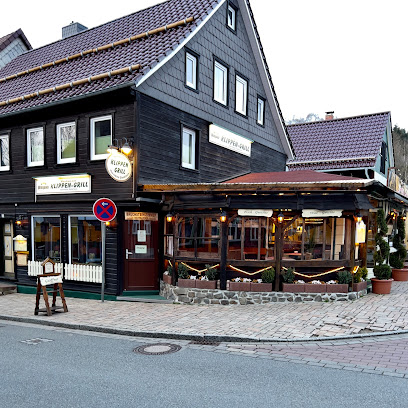
Karthi‘s
Discover Karthi's in Braunlage: where delicious grilled flavors meet warm hospitality in a charming setting.

Gasthaus Zur Klippe Schierke
Experience authentic German cuisine at Gasthaus Zur Klippe Schierke in Wernigerode - a perfect blend of taste and scenic beauty.

Hohnstein Castle
Discover the medieval charm of Hohnstein Castle amidst breathtaking views in Germany's Harz Mountains.
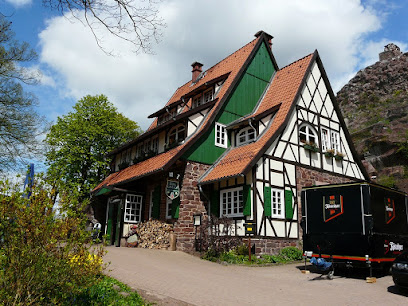
Klosterkrug Wöltingerode
Experience authentic German cuisine at Klosterkrug Wöltingerode amidst scenic landscapes and warm hospitality.

Waldgaststätte Rinderstall im Nationalpark Harz
Experience authentic German cuisine at Waldgaststätte Rinderstall, nestled in scenic Harz National Park – a perfect blend of nature and gastronomy.
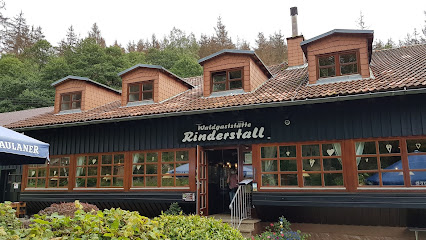
Molkenhaus Bad Harzburg
Discover exquisite regional cuisine at Molkenhaus Bad Harzburg, your perfect retreat in the scenic Harz mountains.

Nationalparkgaststätte Rehberger Grabenhaus
Discover delicious German cuisine in the heart of Harz Mountains at Nationalparkgaststätte Rehberger Grabenhaus – where nature meets tradition.

Markets, malls and hidden boutiques
Wernigerode Castle
Discover the enchanting Wernigerode Castle, a neo-Romanesque gem in the Harz Mountains, rich in history and stunning views.

Landschaftsschutzgebiet Harz und südliches Harzvorland
Explore the breathtaking beauty of Landschaftsschutzgebiet Harz und südliches Harzvorland, a premier nature preserve in Germany, perfect for outdoor adventures.

Harz National Park
Experience the breathtaking beauty and rich wildlife of Harz National Park, a premier destination for outdoor adventures and nature lovers in Germany.

Brockenhaus
Explore the beauty and history of Brockenhaus, a premier visitor center in the Harz Mountains, ideal for hiking and cultural experiences.

Nationalpark-Besucherzentrum TorfHaus
Discover the heart of Harz National Park at the Nationalpark-Besucherzentrum TorfHaus, your gateway to stunning hikes and nature exploration.

South Harz Nature Park
Explore the stunning landscapes, rich biodiversity, and cultural heritage of South Harz Nature Park, an ideal destination for nature lovers and adventure seekers.
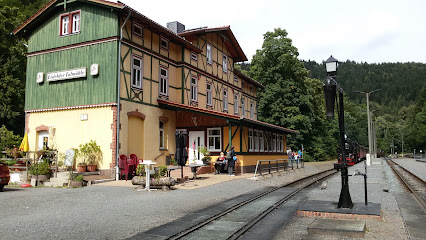
Harz
Explore the breathtaking landscapes of the Harz Mountain Range, where adventure and cultural heritage come together in a stunning natural setting.

Wolfswarte
Experience the breathtaking views and tranquil ambiance of Wolfswarte, a scenic spot in Germany perfect for nature lovers and adventure seekers.
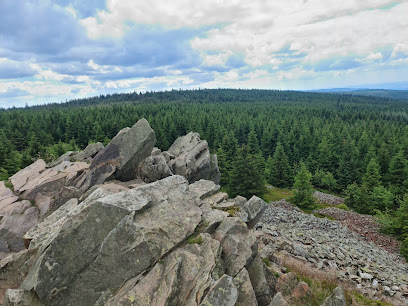
Waldschwimmbad Okerteich
Experience the serene beauty of Waldschwimmbad Okerteich, an outdoor swimming pool surrounded by breathtaking nature, perfect for relaxation and family fun.

Herzberg Castle
Explore the rich history and stunning landscapes at Herzberg Castle, a captivating museum in the heart of the Harz Mountains.
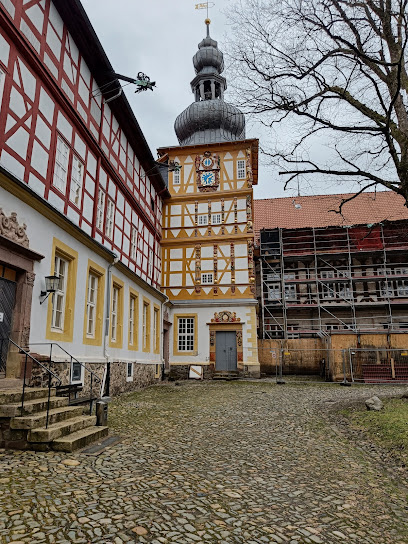
Blankenburg Castle
Explore Blankenburg Castle, a stunning medieval landmark in the Harz mountains, rich in history and scenic beauty, perfect for all types of travelers.
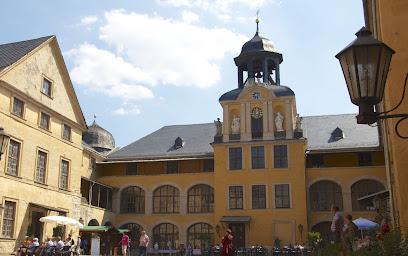
House of nature
Discover the incredible biodiversity of the Harz region at the House of Nature, a natural history museum perfect for families and nature lovers.

Harzturm GmbH
Experience breathtaking views and family-friendly fun at Harzturm GmbH, your destination in the heart of the Harz Mountains.
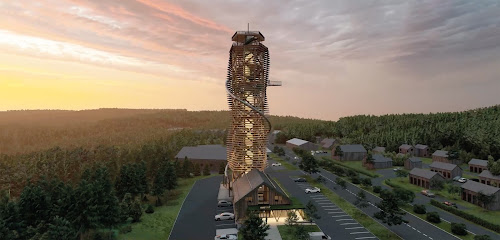
Regionalladen Harz
Explore the culinary treasures of the Harz region at Regionalladen Harz, where local flavors come alive in every delightful product.

Harz Tourism e. V.
Explore the wonders of the Harz region at Goslar's Tourist Information Center, your gateway to adventures and rich cultural experiences.

Essential bars & hidden hideouts
Bavaria Alm Torfhaus
Experience authentic German cuisine at Bavaria Alm Torfhaus, nestled in the stunning Harz Mountains, perfect for a culinary getaway.
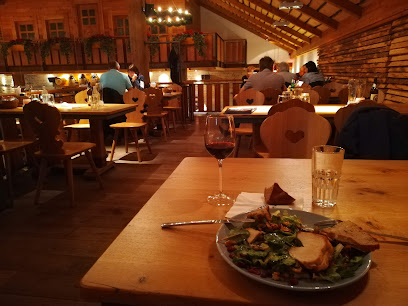
JASPER Grill Bar & Lounge / Club
Experience the perfect blend of delicious burgers and vibrant nightlife at JASPER Grill Bar & Lounge in Braunlage, a must-visit destination for all tourists.

Karthi‘s
Discover Karthi's in Braunlage, where delicious grilled dishes meet a cozy atmosphere for an unforgettable dining experience.

Nationalparkgaststätte Rehberger Grabenhaus
Experience the rich flavors of German cuisine in the heart of nature at Rehberger Grabenhaus, a must-visit dining spot in Harz National Park.

Tenne Schwof & Schmaus Am Blueberry Hill
Experience the vibrant atmosphere and delicious local cuisine at Tenne Schwof & Schmaus Am Blueberry Hill in Braunlage, a true gem for food and drink enthusiasts.

Tommis Pub
Discover a blend of British cuisine and local brews at Tommis Pub in Wernigerode, a cozy retreat for tourists and locals alike.

HaiLive Cocktailbar
Experience the vibrant nightlife of Wernigerode at HaiLive Cocktailbar, where expertly crafted cocktails and a lively atmosphere await.

Bier-Comptoir
Experience the heart of Bad Harzburg at Bier-Comptoir, where local beers and hearty dishes come together in a vibrant gastropub setting.
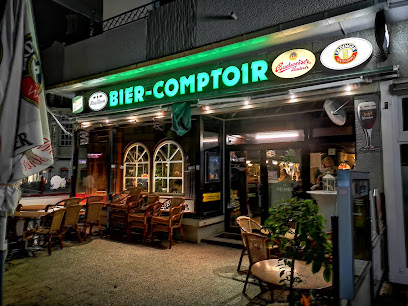
Anno Tobak
Discover Anno Tobak in Clausthal-Zellerfeld: a cozy pub and bistro offering delicious local cuisine and a warm atmosphere for all visitors.

Kellerclub im StuZ e.V.
Discover the cultural heartbeat of Clausthal-Zellerfeld at Kellerclub im StuZ e.V., a lively pub and cocktail bar with a local flair.

Blues Pub
Discover the soulful ambiance of Blues Pub, where live music and a friendly atmosphere create unforgettable nights in Bad Harzburg.

na und... die Musikkneipe
Discover the vibrant nightlife at Na und... die Musikkneipe, a lively pub in Goslar featuring live music and a welcoming atmosphere.

Hille-Bille „betreutes Trinken“
Discover the charm of Hille-Bille, a cozy gastropub in Braunlage offering local brews and hearty dishes in a warm atmosphere.

Kneipchen
Experience the charm of Kneipchen, a cozy pub in Ilsenburg, offering local brews and hearty meals for a delightful evening.

Altes Backhaus
Discover the cozy charm of Altes Backhaus, a beloved pub in Altenau offering local beers, a friendly atmosphere, and a taste of German hospitality.

Local Phrases about Harz National Park
-
- HelloHallo
[hah-loh] - GoodbyeAuf Wiedersehen
[owf vee-der-zay-en] - YesJa
[yah] - NoNein
[nine] - Please/You're welcomeBitte
[bih-tuh] - Thank youDanke
[dahn-kuh] - Excuse me/SorryEntschuldigung
[ent-shool-dee-goong] - How are you?Wie geht es Ihnen?
[vee geht es een-en] - Fine. And you?Gut. Und Ihnen?
[goot oond een-en] - Do you speak English?Sprechen Sie Englisch?
[shprek-en zee eng-leesh] - I don't understandIch verstehe nicht
[ikh fer-shtay-uh nikht]
- HelloHallo
-
- I'd like to see the menu, pleaseIch möchte bitte die Speisekarte sehen
[ikh merkh-tuh bih-tuh dee shpigh-ze-kahr-teh zay-en] - I don't eat meatIch esse kein Fleisch
[ikh es-seh kine fly-sh] - Cheers!Prost!
[prohst] - I would like to pay, pleaseIch würde gerne bezahlen, bitte
[ikh voo-der geh-ren beh-tsal-en, bih-tuh]
- I'd like to see the menu, pleaseIch möchte bitte die Speisekarte sehen
-
- Help!Hilfe!
[hil-feh] - Go away!Geh weg!
[geh vehg] - Call the Police!Rufen Sie die Polizei!
[roo-fen zee dee po-lee-tsai] - Call a doctor!Rufen Sie einen Arzt!
[roo-fen zee i-nen ahrts] - I'm lostIch habe mich verirrt
[ikh hah-buh mikh fer-irt] - I'm illIch bin krank
[ikh been krahngk]
- Help!Hilfe!
-
- I'd like to buy...Ich möchte ... kaufen
[ikh merkh-tuh ... kow-fen] - I'm just lookingIch schaue nur
[ikh show-eh noor] - How much is it?Wie viel kostet das?
[vee feel koh-stet dahs] - That's too expensiveDas ist zu teuer
[dahs ist tsoy toy-er] - Can you lower the price?Können Sie den Preis senken?
[kern-en zee den prees zeng-ken]
- I'd like to buy...Ich möchte ... kaufen
-
- What time is it?Wie spät ist es?
[vee shpate ist es] - It's one o'clockEs ist ein Uhr
[es ist iyn oor] - Half past (10)Halb elf
[halb elf] - MorningMorgen
[mohr-gen] - AfternoonNachmittag
[nahk-mit-tahk] - EveningAbend
[ah-bent] - YesterdayGestern
[geh-stern] - TodayHeute
[hoy-tuh] - TomorrowMorgen
[mohr-gen] - 1eins
[iyns] - 2zwei
[tsvai] - 3drei
[dry] - 4vier
[feer] - 5fünf
[fuhnf] - 6sechs
[zeks] - 7sieben
[zee-ben] - 8acht
[ahkt] - 9neun
[noyn] - 10zehn
[tsayn]
- What time is it?Wie spät ist es?
-
- Where's a/the...?Wo ist ein/der...?
[voh ist iyn/der] - What's the address?Was ist die Adresse?
[vahs ist dee ah-dreh-suh] - Can you show me (on the map)?Können Sie es mir zeigen (auf der Karte)?
[kern-en zee es meer tsay-gen (owf der kar-teh)] - When's the next (bus)?Wann kommt der nächste (Bus)?
[vahn kohmt der nekh-stuh (booss)] - A ticket (to ....)Eine Fahrkarte (nach ....)
[i-nuh fahr-kahr-teh (nahkh ....)]
- Where's a/the...?Wo ist ein/der...?
History of Harz National Park
-
The Harz National Park is steeped in a rich mining history dating back to the medieval era. The region was known for its silver, copper, and iron ore deposits, which were extensively mined from as early as the 10th century. The mining activities not only shaped the landscape but also led to the establishment of prosperous towns like Goslar and Clausthal-Zellerfeld. The Rammelsberg Mine in Goslar, a UNESCO World Heritage site, stands as a testament to this era, showcasing the advanced mining techniques and economic significance of the region during the medieval period.
-
The Brocken, the highest peak in the Harz Mountains, is steeped in folklore and myth, particularly associated with witches. According to local legend, witches gather on the Brocken for a grand celebration on Walpurgis Night, which takes place on April 30th. This tradition dates back to pre-Christian times and is still celebrated today with festivities, bonfires, and costumed processions. The Walpurgis Night celebration has become an integral part of the cultural identity of the Harz region, attracting visitors who seek to experience this unique blend of myth and tradition.
-
The Harz National Park is traversed by the historic Harz narrow-gauge railway, a marvel of 19th-century engineering. The railway, which began operation in 1899, was crucial for transporting mined materials and connecting remote towns within the region. Today, the steam-powered trains offer a scenic journey through the park, providing a glimpse into the historical development of transportation and industry in the Harz. The railway's highest point, the Brocken summit, offers breathtaking views and a sense of stepping back into a bygone era.
-
Harz National Park was officially established in 1990, after the reunification of Germany. The park was formed by merging the former East German 'Hochharz' and West German 'Harz' parks. This unification symbolized a new era of conservation efforts aimed at preserving the unique ecosystems and biodiversity of the Harz Mountains. The establishment of the park marked a significant step in protecting natural habitats, promoting sustainable tourism, and fostering environmental education. The park now covers an area of approximately 247 square kilometers, encompassing diverse landscapes from dense forests to alpine meadows.
-
Located on the southeastern edge of the Harz, the Kyffhäuser Monument commemorates the legendary Emperor Barbarossa and the unification of Germany. Built between 1890 and 1896, the monument stands atop the Kyffhäuser Mountain and is a significant historical and cultural landmark. It symbolizes the rich medieval heritage of the Harz region and serves as a reminder of the area's importance in German history. The monument attracts history enthusiasts and tourists alike, offering panoramic views of the surrounding landscape and insights into the region's storied past.
-
During World War II, the Harz region played a strategic role due to its location and resources. The mountains were used for military operations and as a site for armament production. Post-war, the Harz became a border region, divided between East and West Germany. The Brocken, being in the Soviet-controlled East, was off-limits to the public and used for military and surveillance purposes during the Cold War. The remnants of these periods, including bunkers and watchtowers, are scattered throughout the park, offering a poignant reminder of the region's turbulent history.
Harz National Park Essentials
-
Harz National Park is located in the heart of Germany, spanning across the states of Lower Saxony and Saxony-Anhalt. The nearest major airports are Hannover (HAJ) and Leipzig/Halle (LEJ). From these airports, you can take a train or rent a car to reach the park. The Deutsche Bahn (German Railways) offers regular services to towns surrounding the park, such as Wernigerode, Goslar, and Bad Harzburg. From these towns, local buses or taxis can take you directly to the park.
-
Within Harz National Park, various transportation options are available. The Harz Narrow Gauge Railway (Harzer Schmalspurbahnen) is a popular way to explore the park, offering scenic routes through the mountains. For more flexibility, renting a car is a good option. There are also well-marked hiking and cycling trails for those who prefer to explore on foot or by bike. Local buses connect the main towns and villages within the park.
-
The official currency in Germany is the Euro (€). Credit and debit cards are widely accepted in most hotels, restaurants, and shops within the towns surrounding Harz National Park. However, it is advisable to carry some cash, especially when visiting smaller establishments or rural areas. ATMs are available in all major towns and villages.
-
Harz National Park is generally a safe destination for tourists. However, as with any travel destination, it is important to take standard precautions. Avoid secluded areas after dark and keep an eye on your belongings in crowded places. There are no specific high-crime areas targeting tourists within the park, but staying vigilant is always recommended.
-
In case of an emergency, dial 112 for immediate assistance, which is the emergency number for police, fire, and medical services throughout Europe. There are medical facilities in the larger towns such as Wernigerode and Goslar. It is highly recommended to have travel insurance that covers medical emergencies. For minor health issues, pharmacies are available in most towns and villages.
-
Fashion: Do wear comfortable and weather-appropriate clothing, especially if you plan on hiking. Avoid overly casual attire when dining in nicer restaurants. Religion: Do respect local religious customs if visiting churches or sacred sites. Public Transport: Do be punctual and purchase tickets beforehand. Don't be loud or disruptive. Greetings: Do greet people with a friendly 'Hallo' or 'Guten Tag.' A handshake is also customary. Eating & Drinking: Do try local specialties such as Harzer cheese and schnitzel. Don't forget to tip, typically 5-10% in restaurants.
-
To experience Harz National Park like a local, consider visiting during the off-peak seasons of spring and autumn for fewer crowds and beautiful scenery. Participate in local festivals such as the Walpurgis Night celebrations in April. For a unique experience, take a ride on the Brocken Railway to the highest peak in the Harz Mountains, the Brocken. Engage with locals in small villages and try regional dishes. Don't miss the opportunity to explore the medieval towns of Wernigerode and Quedlinburg, both of which offer a rich historical experience.
Trending Landmarks in Harz National Park
-
Landschaftsschutzgebiet Harz und südliches Harzvorland
-
Titan RT
-
Baumannshöhle - Rübeländer caves
-
Baumwipfelpfad Harz
-
Burg und Festung Regenstein
-
Hexentanzplatz Zoo
-
Caves experience center Isenberg limestone cave
-
Königshütte Waterfall
-
Unicorn Cave
-
Brockenhaus
-
Nationalpark-Besucherzentrum TorfHaus
-
Oderteich
-
Scharzfels Castle
-
Büchenberg Pit
-
Samson Pit
Nearby Cities to Harz National Park
-
Things To Do in Erfurt
-
Things To Do in Leipzig
-
Things To Do in Bremen
-
Things To Do in Potsdam
-
Things To Do in Munster
-
Things To Do in Hamburg
-
Things To Do in Berlin
-
Things To Do in Wurzburg
-
Things To Do in Frankfurt
-
Things To Do in Lubeck
-
Things To Do in Dresden
-
Things To Do in Karlovy Vary
-
Things To Do in Essen
-
Things To Do in Koblenz
-
Things To Do in Nuremberg












